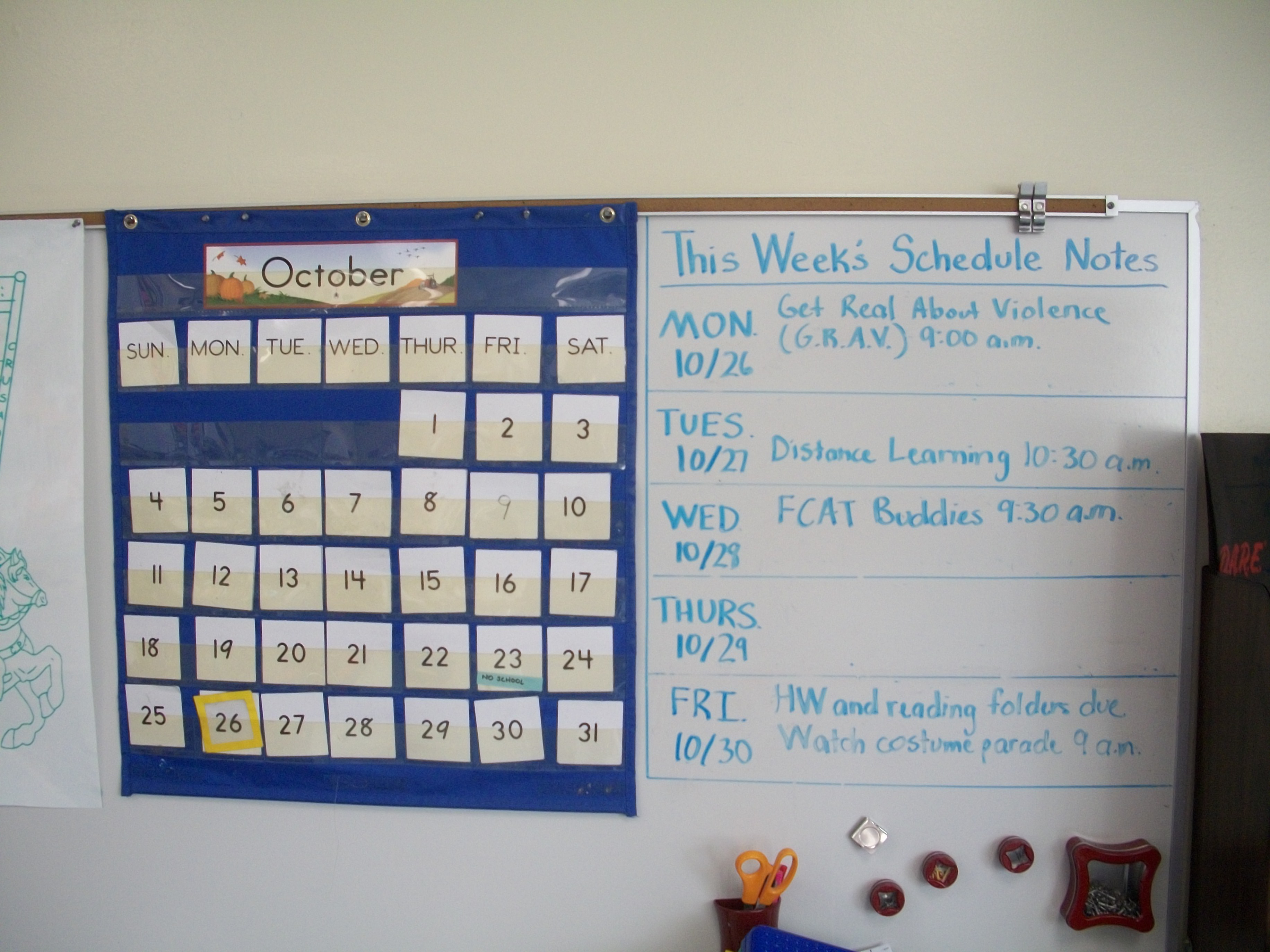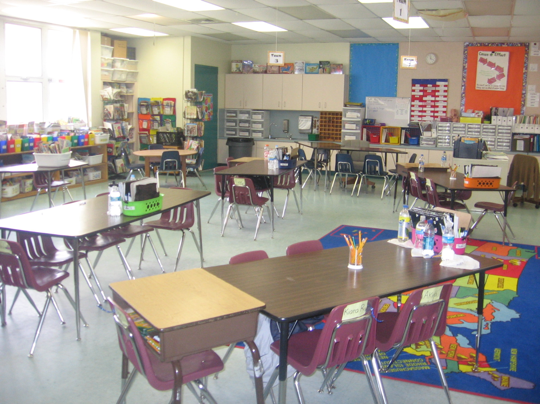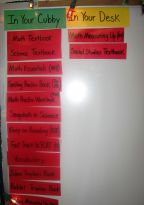I love a colorful, well-decorated classroom! But students with Attention Deficit Disorder (ADD) or Attention Deficit Hyperactivity Disorder (ADHD) don’t always share that enthusiasm. Some kids with attention challenges are easily distracted by a cluttered, crowded learning environment, so it’s necessary to organize your classroom carefully.

These tips are designed to help you create a cozy classroom in which students feel comfortable and welcomed, while still being mindful of kids who need a less distracting learning environment. I wrote the ideas with the challenges of students with ADD and ADHD in mind, but I think you’ll find that most (if not all) of your students will benefit from them.

1) Keep the front wall of the classroom as bare as possible.
Lots of decorations can make it difficult for children with ADD and ADHD to stay focused. Try to hang the majority of your teaching aids on the side and back walls so that students have little to focus on in the front of the room except your instruction. Even colorful rugs with maps or shapes on them can break children’s concentration, so you may need to keep brightly patterned carpets at the back or sides of the classroom.
2) Arrange classroom furniture to minimize distractions.
Have students face away from windows and your classroom door if possible. If your students take turns using the computers throughout the day, turn the computer monitors so that students cannot view the screens from their desks. Keep your small group instructional area at the side or rear of the room so that students working independently are not distracted by your teaching. It can be difficult to accommodate all of these distractors, but make every effort to keep students’ desks clustered near the main teaching area and all other classroom features behind them.

3) Turn students’ desks around so they aren’t tempted to play with things inside.
Children with ADD and ADHD can easily become distracted by school supplies in their desks, so it can be helpful to turn the desks around backwards so that the contents cannot be accessed while children are sitting. If you can replace desks with tables, even better.
4) Minimize the number of materials students keep in their desks.
Utilize cubbies and other storage areas for items less-commonly used so that only essential items are within arm’s reach. This will not only limit distractions, but will make it easier for students to stay organized.

5) Post visual aides of the materials students should have out.
This can be done by writing the names of the materials needed on the board (e.g., math book, red notebook, pencil, eraser). For young or very visual children, take photographs of the school supplies, print out, laminate, and stick magnets on the back so you can display photos of the needed items. Dedicate a special area of your chalkboard or whiteboard for ‘Materials Needed’ so that students always know where to look for this information.
6) Structure lessons so that only a few materials are needed at a given time.
When children with ADD or ADHD have numerous items in front of them, they tend to either play around with the materials or become overwhelmed by trying to manage them. Plan your instruction so that children are not constantly moving things around or keeping extra items on their desks. If you use a textbook for only a few problems, try writing the problems on the board so that students need only paper and a pencil in front of them. Limit how many papers students have by completing practice activities on the back of worksheets instead of on a separate sheet. Pre-make materials that need to be cut and glued if children have difficulty managing multiple materials at a time.
More Resources:
- Classroom seating arrangement ideas
- Helping students keep track of papers and when assignments are due
- Teaching students to always write their names on their papers
- Transition activities and tips
What are your classroom organization tips for supporting students with ADD and ADHD?

Angela Watson
Founder and Writer
Sign up to get new Truth for Teachers articles in your inbox
Discussion
OR

Join our
community
of educators
If you are a teacher who is interested in contributing to the Truth for Teachers website, please click here for more information.
















Thanks Angela,
Your ideas make so much good sense!
I can’t wait to try them out in our classroom